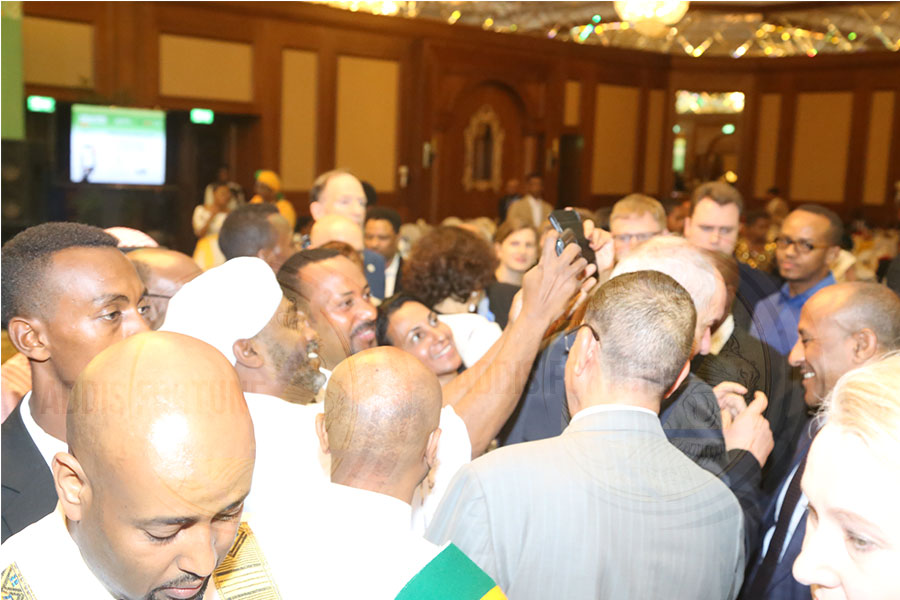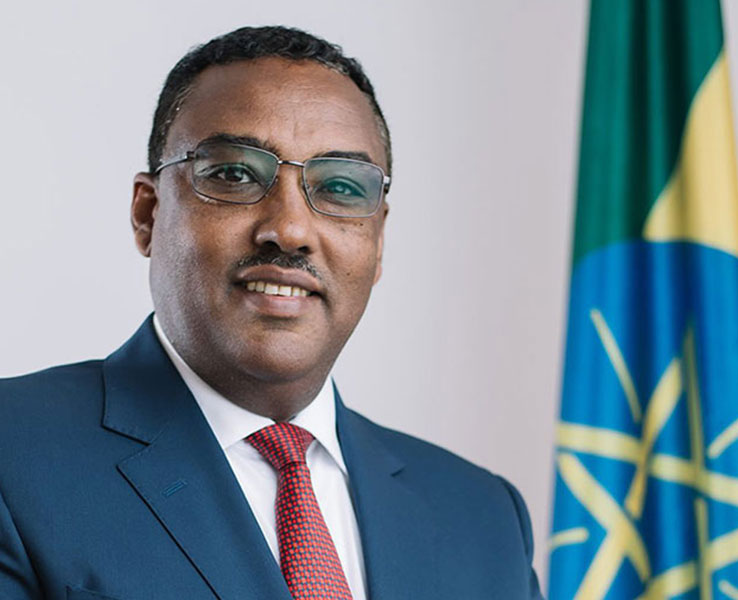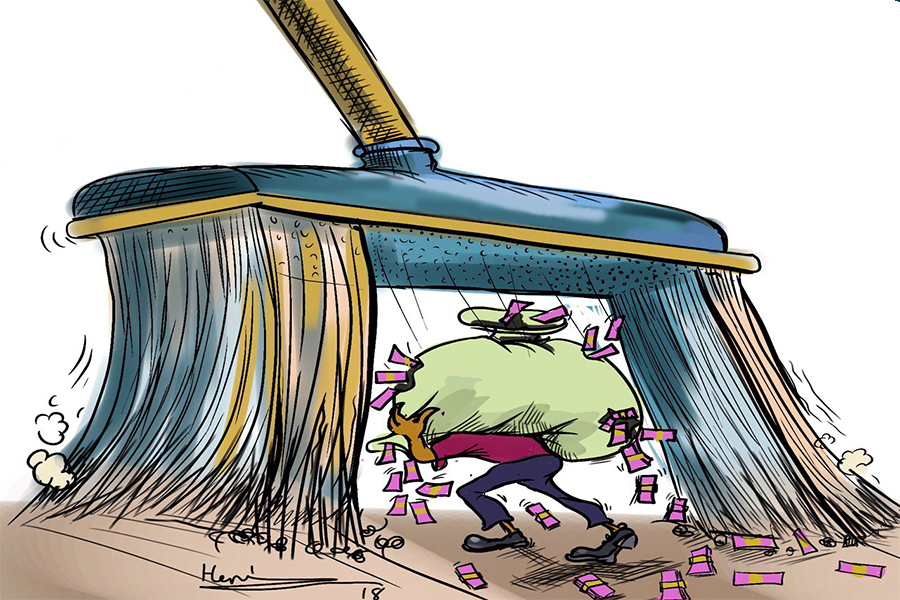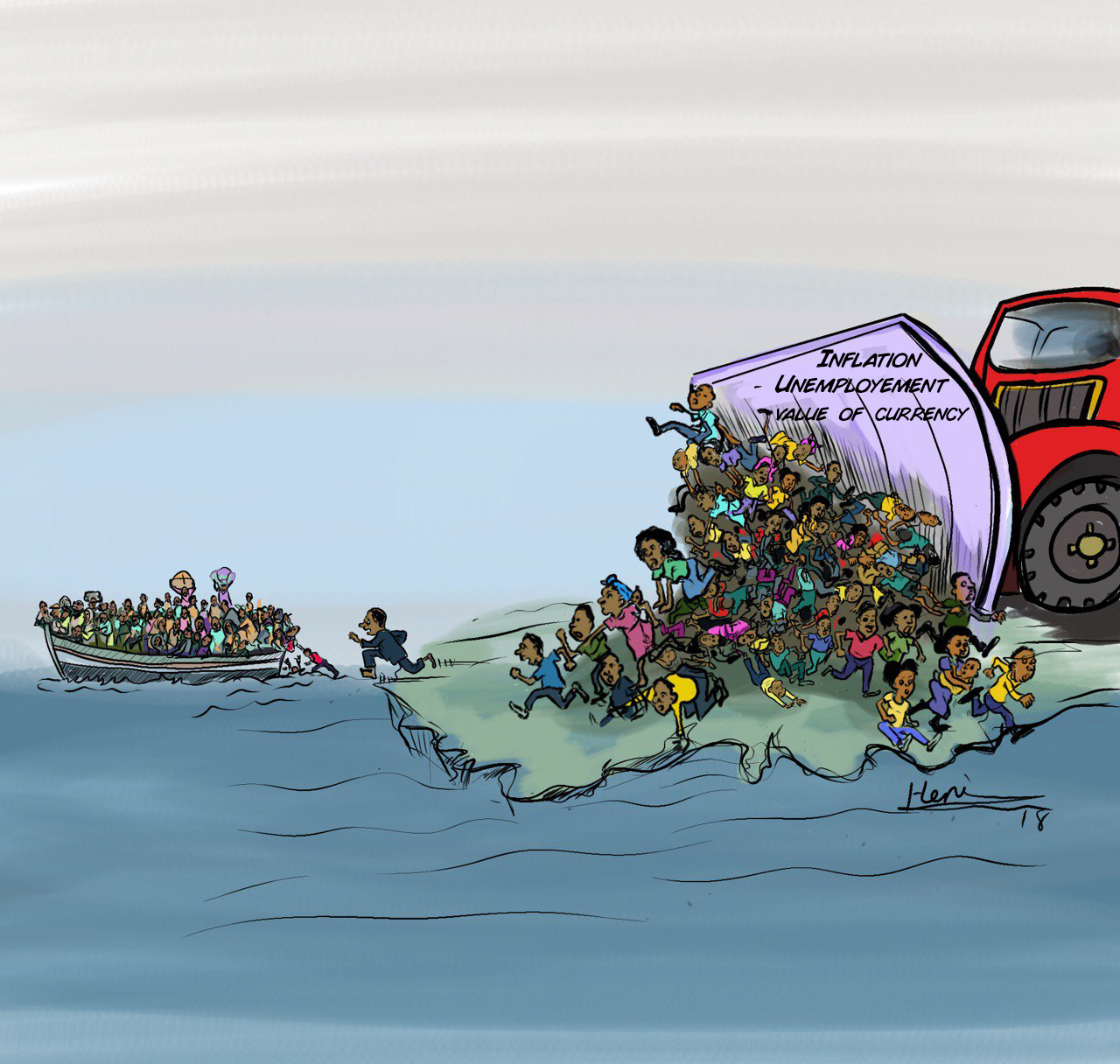
Photo Gallery | 180581 Views | May 06,2019
Aug 17 , 2025. By YITBAREK GETACHEW ( FORTUNE STAFF WRITER )
The federal government, led by the Ministry of Agriculture, is finalising a sweeping licensing regime that will introduce formal regulation to a predominantly subsistence-based fishing sector.
The regime plans to eliminate illegal, unreported, and unregulated (IUU) fishing, ban toxic and unapproved gear (including devices that cause intoxication and electric shock), and enforce seasonal restrictions to protect breeding cycles.
“It isn't possible to fish during the breeding season,” said Fasil Dawit (PhD), head of the fisheries and aquaculture desk at the Ministry of Agriculture, urging fishermen to seek alternative incomes during moratoria. "Fishing using intoxication, electronic devices, or unpermitted nets is forbidden."
Historically governed by open access and informal structures, the fishing industry is facing a watershed moment in the government's Blue Economy ambitions, despite environmental decline, regional fragmentation, and a struggle to formalise the value chain. The forthcoming licensing policy, in line with a national Fisheries & Aquaculture Master Plan, will require all fishing operations (human and mechanical) to be registered. Licenses will be tailored by function (commercial, sport, research, entertainment) and gear type.
The master plan, with an estimated cost of 179 million dollars over 10 years, is a foundation of Ethiopia’s broader bid to conserve aquatic biodiversity and stabilise dwindling fish stocks. The plan also seeks regional harmonisation, especially in shared water bodies, such as Lake Turkana and the Omo River basin, where cross-border illicit fishing abounds.
The strategic importance of cross-border water bodies is growing. Ethiopia has recently signed a memorandum with Kenya and plans to enter into another with South Sudan to coordinate action against illicit fishing. Lake Turkana, a hotspot for Nile perch, is a symbol of shared resource vulnerability. Nile perch marrow, reportedly more valuable than the fish itself, is smuggled to China for food and surgical uses, raising the stakes for transboundary conservation.
At a regional level, the Intergovernmental Authority on Development (IGAD) has stepped in. Its Marine Fisheries Monitoring, Control & Surveillance Coordination Centre, unveiled during a mid-August workshop in Addis Abeba, is envisioned as a regional platform to counter fragmented governance and bolster data systems.
“The Centre is a strategic solution to shared challenges,” said Fikru Regassa, state minister for Agriculture.
IGAD’s initiative aligns with Ethiopia’s plans for aquaparks, hatchery development, and public-private partnerships under the “Yelemat Tirufat” (Basket of Plenty) initiative, which aspires to increase annual fish production capacity from 75,000tns to 200,000tns.
Despite Ethiopia’s over 200 fish species (45 endemic) and a potential output of half a million tons (400,000tns from aquaculture), consumption remains low, and the protein contribution from fish is negligible relative to livestock. The Lake recenly formed at the Grand Ethiopian Renaissance Dam (GERD) yielded 14,000kg of fish, including Nile perch.
Fasil Tadesse (PhD), a lecturer at Bahir Dar University and researcher at the Blue Water Institute, attributes the blame to a “chaotic value chain,” illiteracy, illegal gear, and an “open access” legacy that erodes sustainability. Fish feed remains a bottleneck, as many fishers depend on residue-based inputs, while global players utilise fishmeal to achieve higher yields. This undermines productivity and impedes export competitiveness.
"Farmers often say the baby fish we provide are not good enough to meet their needs," Fassil of the Agriculture Ministry admitted, blaming weaknesses in hatchery capacity and formal market access.
According to Dararo Horaa, a veteran fisherman from Batu Ziway, East Shoa, in the Oromia regional state, spiralling equipment costs and unlicensed competition threaten livelihoods, despite legal compliance.
"The more people there are to produce, the less fish there will be," Dararo told Fortune. "The cost of fishing materials is untouchable."
Nets can cost over 100,000 Br, and hooks can cost up to 10,000 Br. Despite these setbacks, his 66-member group can still haul a quintal daily, though catches are increasingly unpredictable.
"Agricultural runoff into lakes further diminishes stock quality," he said.
Fasil, the researcher, argued that the agriculture officials should stimulate demand by empowering stakeholders, supporting research, and cultivating specialised fish species that are fast-growing and high-yielding. At the national level, livestock resources dominate protein supply, leaving fisheries overlooked.
"Ethiopians don't consume much fish, and the country's resources are underutilised," Fasil noted.
Regional administrations are already piloting regulation enforcement. Officials in Oromia Regional State, a region that produced 3,000tns of fish this year, acknowledged that much of the catch remains illegal. Unlicensed gear, especially around Ziway, Koka, and Gibe lakes, dominates. In Amhara Regional State, which boasts 27,000tns of annual production, high legal gear costs, up to 400,000 Br for 20 nets on a single boat, drive fishermen toward illegal monofilament nets, available at a fraction of the cost.
"The high cost of fishing nets leads them to use illegal nets," said Aragaw Ambaw, fisheries development management specialist at the Amhara Animal & Fisheries Development Bureau.
Despite these structural weaknesses, regional states are expanding their aquaculture operations. Officials in the Amhara Region built 40 artificial ponds in every district and released one million fingerlings, with plans for nearly double this volume. Those in the Oromia Region promote skill development for local gear manufacturing. However, resource constraints and weak hatchery systems have limited progress.
The sector supports over 60,000 direct jobs and an estimated 400,000 in related services, making any regulatory tightening a delicate socioeconomic calculus.
Both regions are experimenting with aquaculture, though skills and resources remain scarce. The Oromia region has provided training on hand-making fishing materials, while the Amhara region has launched farmer-based aquaculture schemes. However, Aragaw admitted that the lack of local manufacturing factories and the high cost of imports make scaling difficult.
The reform seeks to balance sustainability and social equity. However, experts warn that the authorities' strategy of expecting fishers to seek “alternative livelihoods” during breeding bans risks economic displacement unless it is linked to retraining and microfinance.
According to Milikisa Negaassa, an official for the Oromia Regional State, the illicit fish trade, particularly from Lake Abaya and Gibe, mirrors black markets like khat.
"Much of the fish ends up in Addis Abeba through informal supply chains, bypassing taxation and traceability," he told Fortune.
Compounding the challenge is the underdeveloped transport and cold chain infrastructure, especially in remote regions. Few areas have refrigerated facilities, which undermines market competitiveness and shelf life.
To unlock the aquaculture potential, researchers like Fasil Tadesse say policymakers should embrace aquaculture as a buffer against climate change and pollution in natural water bodies. Developing affordable and efficient fish feed is central to this effort. Currently, Ethiopia relies on residue-based feed, unlike many countries where fishmeal is produced from smaller species, a practice that delivers better quality output.
"There are opportunities where we can easily produce and export fish, but we haven't used them," said Fasil from Bahir Dar University.
Despite widespread challenges, officials view the new licensing system and regional cooperation as turning points. By tightening controls, curbing illicit activities, supporting aquaculture, and investing in infrastructure, Agricultural officials hope, with IGAD's backing and a master plan worth hundreds of millions of dollars, to revitalise its fisheries.
PUBLISHED ON
Aug 17,2025 [ VOL
26 , NO
1320]

Photo Gallery | 180581 Views | May 06,2019

Photo Gallery | 170774 Views | Apr 26,2019

Photo Gallery | 161853 Views | Oct 06,2021

My Opinion | 137295 Views | Aug 14,2021

Nov 1 , 2025
The National Bank of Ethiopia (NBE) issued a statement two weeks ago that appeared to...

Oct 25 , 2025
The regulatory machinery is on overdrive. In only two years, no fewer than 35 new pro...

Oct 18 , 2025
The political establishment, notably the ruling party and its top brass, has become p...

Oct 11 , 2025
Ladislas Farago, a roving Associated Press (AP) correspondent, arrived in Ethiopia in...